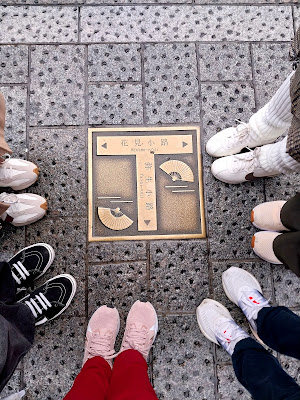Intercultural Design (Project 2)
INTERCULTURAL DESIGN (PROJECT 2)
25/02/2024 - 01/03/2024 (Week 4 - Week 5)
Dea Natasha Binti Mohd Khairul Fauzi (0368610)
Bachelor of Design (Honours) in Creative Media
Intercultural Design
Project 2 Field Study
1 INSTRUCTION
3 PROPOSAL
25/02/2024 - 01/03/2024 (Week 4 - Week 5)
Dea Natasha Binti Mohd Khairul Fauzi (0368610)
Bachelor of Design (Honours) in Creative Media
Intercultural Design
Project 2 Field Study
1 INSTRUCTION
2 FIELD STUDY
On 25/02/2024 until 1/03/2024, Mr Asrizal, Ms Anis and two student helpers brought a group of 75 students to Osaka, Japan. There, we were required to conduct our research about the topics that we have chosen.
Since my group chose to do about Geisha and "Navigating Japanese Manners: A Guide to Dos and Don'ts for Cultural Etiquette" (see Project 1), we had to do our research in Kyoto, Japan. We took a train there and started our day by going to Nishiki Market. There, we could see a lot of signboards about rules such as no smoking in general areas and no eating on the streets.
Then, we went to Hanami-koji Street which is a famous street where we can often spot Geisha. However, since we came on a rainy day, we could only see one Geisha. We couldn't take a picture of her as she was most likely on her way to her workplace. We did see a few signboards and some Geisha posters along the street.
 |
| Hanami-koji Street |
 |
| Geisha design on a fence |
 |
| Geisha poster |
 |
| "Don't spread out and block the street" and "Don't touch lanterns, fences or doors on private houses" signboard |
 |
| "No photography on private road" signboard |
On the next day, we continued our research in Osaka. First, we went to Osaka Castle. There was a sign that says no drone zone outside the castle. In the castle, we weren't allowed to take pictures on level 3 and 4 to protect the arts there.
Then, we went to Osaka Museum of Housing and Living. There was a life size model of old Osaka. We could experience how it feels like to live in Osaka back then. There were a lot of Geisha themed models there.
 |
| Geisha dolls |
 |
| Geisha dolls and house model |
3 PROPOSAL
After returning to Malaysia, we gathered all info that we got from our research in Japan.
4 REFLECTION
Experience
Even though this is my second time going to Japan, I realised that I learned a lot more about Japan and their culture.
Observations
Malaysia and Japan are similar, but also quite different. While both countries have certain rules or manners, Japan are more strict about it.
Findings
Malaysia is much more lenient while it is important for Japanese to follow their rules as it is their way of life.
5 FEEDBACKS
Our current idea is to make a magazine about Japanese manners. However, after the consultation with Mr Asrizal, he said that the outcome should be something that relates both Malaysia and Japan, not just Japan.
In the end, it is decided that we would make a guide book that explains about the similarities and differences between Malaysian and Japanese manners.
6 FURTHER READING
For this task, I read Etiquette Guide to Japan by Boye Lafayette De Mente. This book contains a lot of Japanese manners that are explained in detail.
7 REFERENCES
7.1 Website
Japan-Guide.com (2024), Japanese Etiquette, https://www.japan-guide.com/e/e622.html
7.2 Book
Boye Lafayette De Mente (2015), Etiquette Guide to Japan, Tuttle Publishing, The United States of America.
.
.
.
THE END
.
.
.













Comments
Post a Comment